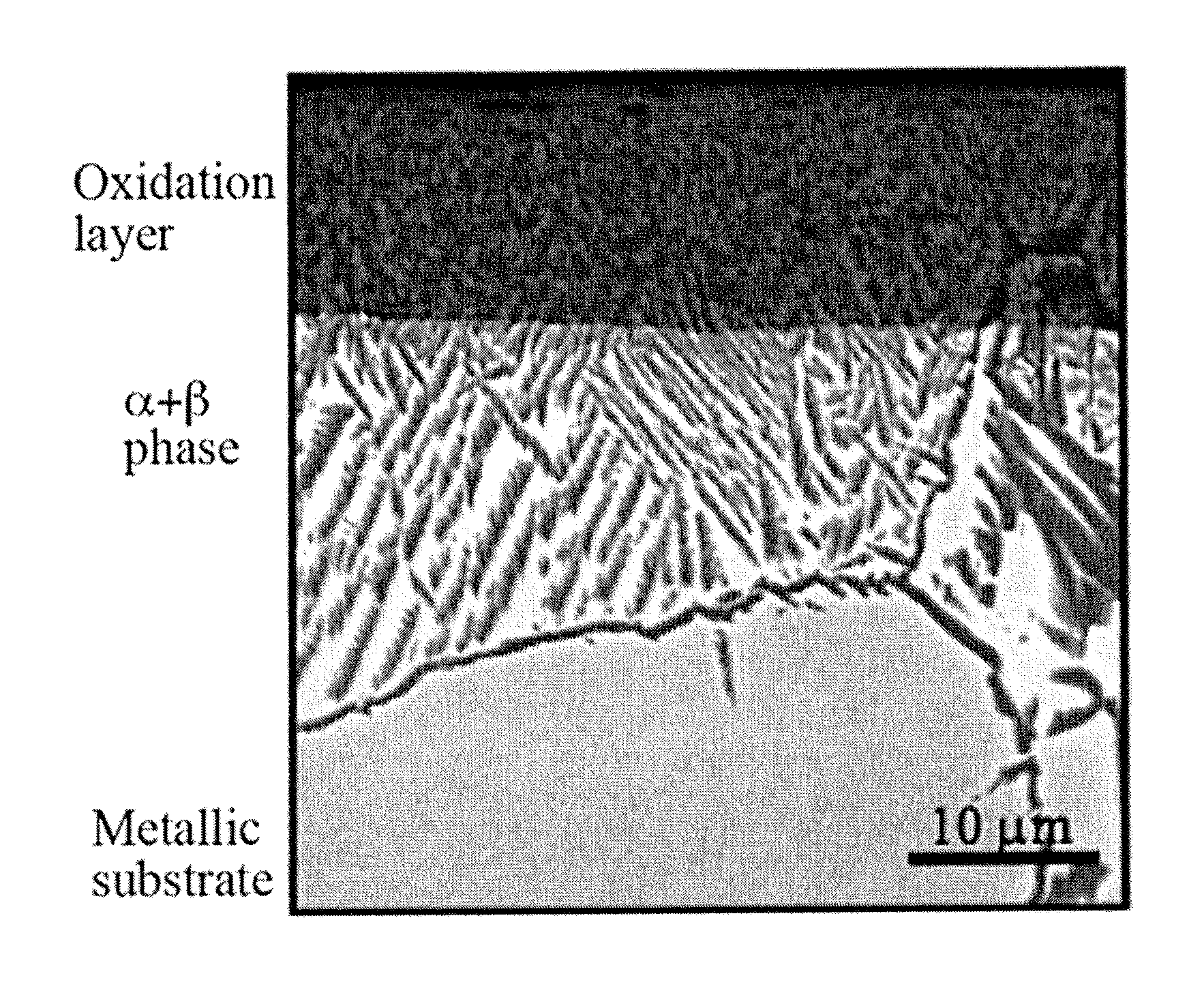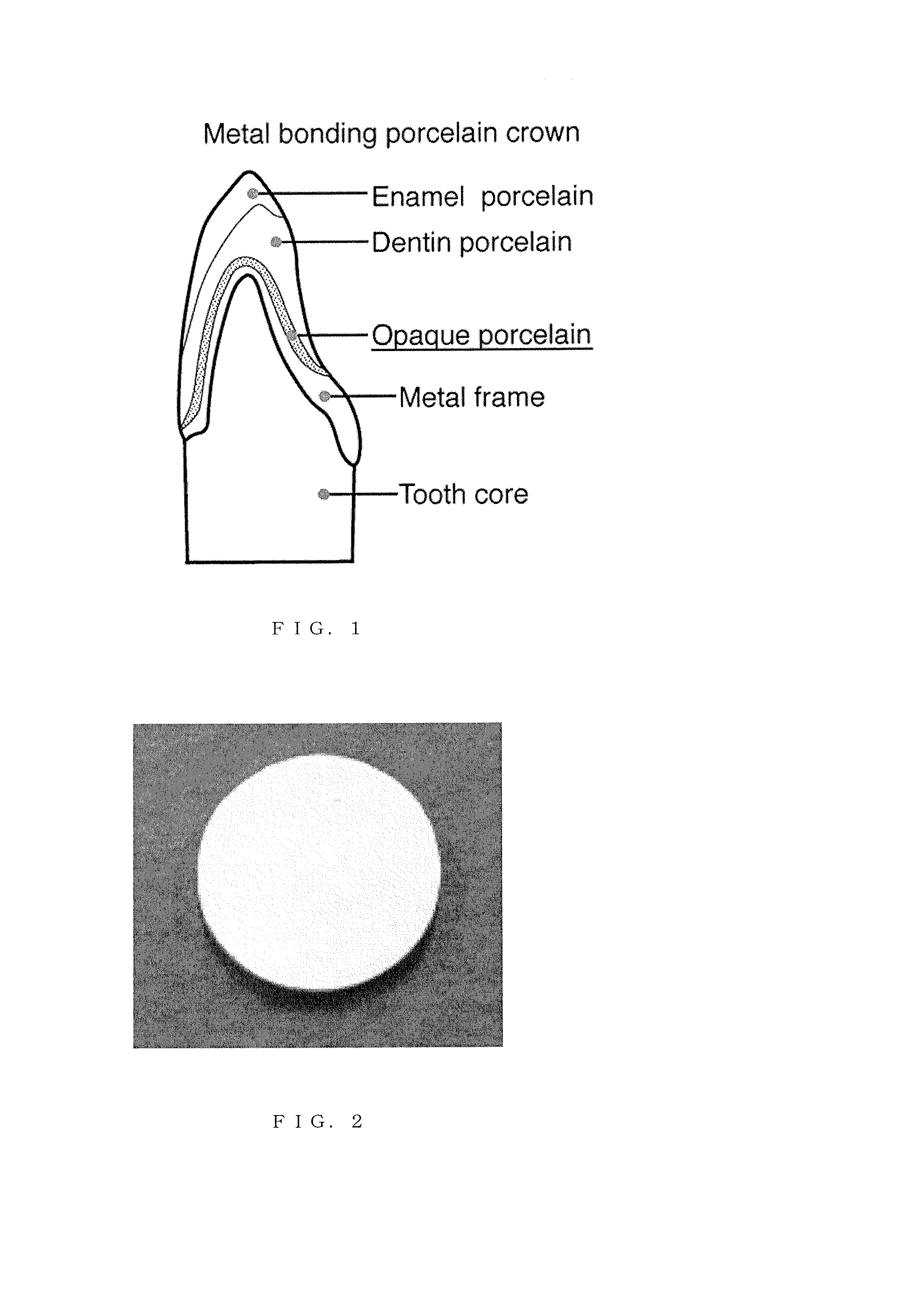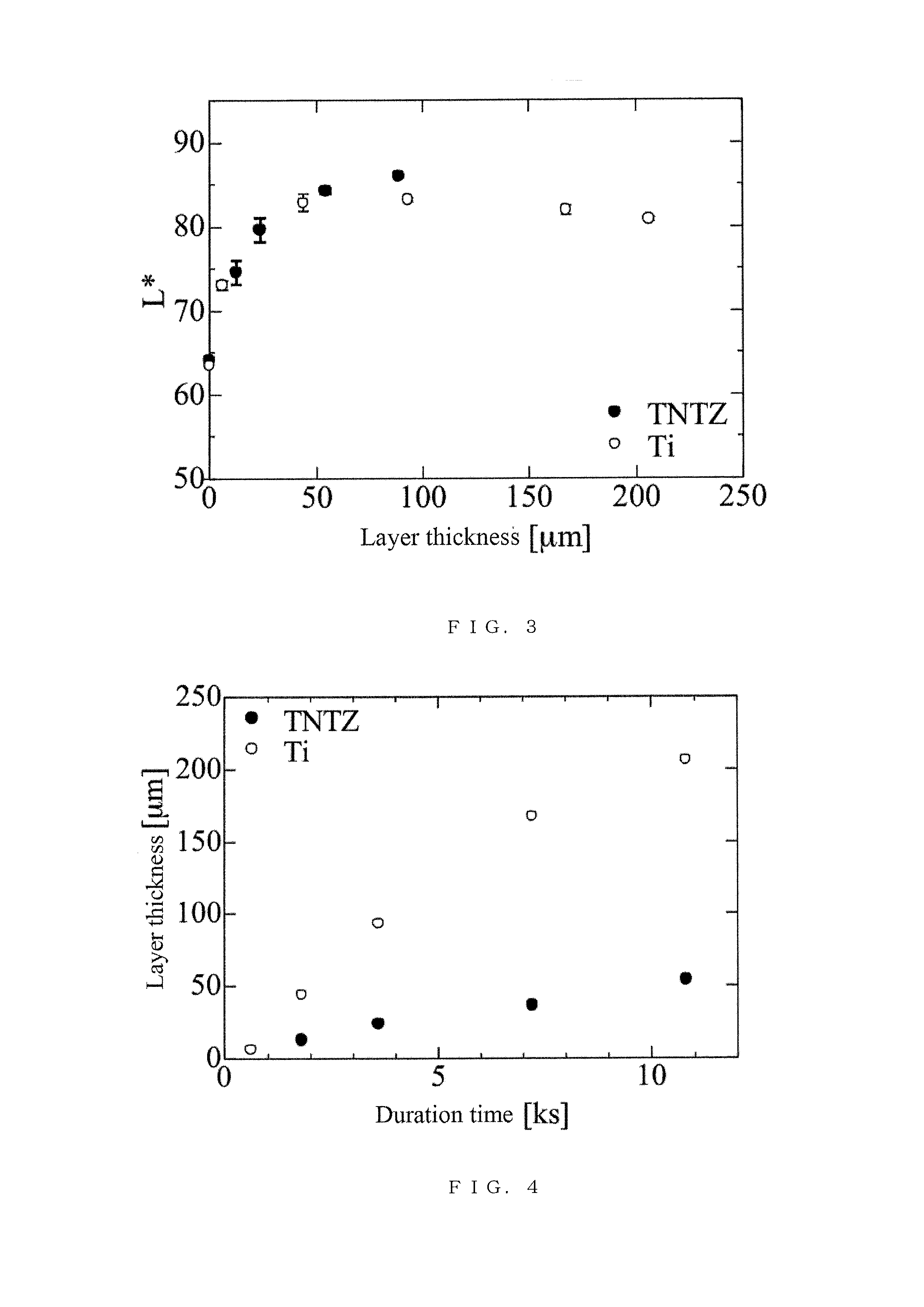Composite material for dental prosthesis and method for manufacturing the same
a dental prosthesis and composite material technology, applied in the direction of solid-state diffusion coating, coating, chemistry apparatus and processes, etc., can solve the problems of titanium alloys, when used as dental materials, insufficient aesthetic quality, and titanium materials that do not relate to material surface whitening, so as to improve the aesthetic quality of the substrate, maintain the strength and toughness thereof, and improve the effect of aesthetic quality
- Summary
- Abstract
- Description
- Claims
- Application Information
AI Technical Summary
Benefits of technology
Problems solved by technology
Method used
Image
Examples
first embodiment
[0033] Formation of Oxidation Layer on TNTZ1
[0034]Hot groove-rolled bars (10 mm in diameter) of a Ti-29Nb-13Ta-4.6Zr alloy (in mass percent) as a beta titanium alloy were held to 800° C. in a vacuum for one hour as a homogenization treatment, subjected to furnace cooling in argon gas, and cut to a thickness of 1 mm. For uniform surface quality, the works were subjected to dry grinding to a degree in terms of #1500 emery paper, degreased, and thereby had a clean surface. The works were then subjected to a surface oxidation in the air. Specifically, the works were held to a temperature of 950° C. to 1200° C. for one hour and then cooled; or held to 800° C. for 24 hours and then cooled; or held to 1000° C. for 10 to 180 minutes and then cooled. Cooling down to a temperature of 200° C. was controlled at a rate of temperature drop of 2.00° C. / min, followed by furnace cooling.
[0035]FIG. 2 depicts an illustrative formation of an oxidation layer, in which a Ti-29Nb-13Ta-4.6Zr alloy substrat...
third embodiment
[0040] Formation of Oxidation Layer on CP Ti Bars (10 mm in diameter) of CP Ti (with a Ti content of 99.5 percent by mass or more) as an alpha titanium alloy were held to 800° C. in a vacuum for 5 minutes as a homogenization treatment, cooled in argon gas, and cut to a thickness of 1 mm. For uniform surface quality, the samples were subjected to dry grinding to a degree in terms of #1500 emery paper, degreased, and thereby had a clean surface. The samples were then subjected to surface oxidation of holding to different temperatures in the air for different duration times to give oxidation layers. The results are indicated in FIG. 11. The resulting samples had lightness L* of up to 90 or more, equal to or higher than those of natural teeth (L*=60 to 80).
[0041]As is demonstrated by FIG. 11, white oxidation layers can be formed on a titanium surface also by subjecting CP Ti to heat treatments in the air at different temperatures for different duration times. A CP Ti substrate having an...
PUM
| Property | Measurement | Unit |
|---|---|---|
| thickness | aaaaa | aaaaa |
| temperature | aaaaa | aaaaa |
| temperature | aaaaa | aaaaa |
Abstract
Description
Claims
Application Information
 Login to View More
Login to View More - R&D
- Intellectual Property
- Life Sciences
- Materials
- Tech Scout
- Unparalleled Data Quality
- Higher Quality Content
- 60% Fewer Hallucinations
Browse by: Latest US Patents, China's latest patents, Technical Efficacy Thesaurus, Application Domain, Technology Topic, Popular Technical Reports.
© 2025 PatSnap. All rights reserved.Legal|Privacy policy|Modern Slavery Act Transparency Statement|Sitemap|About US| Contact US: help@patsnap.com



